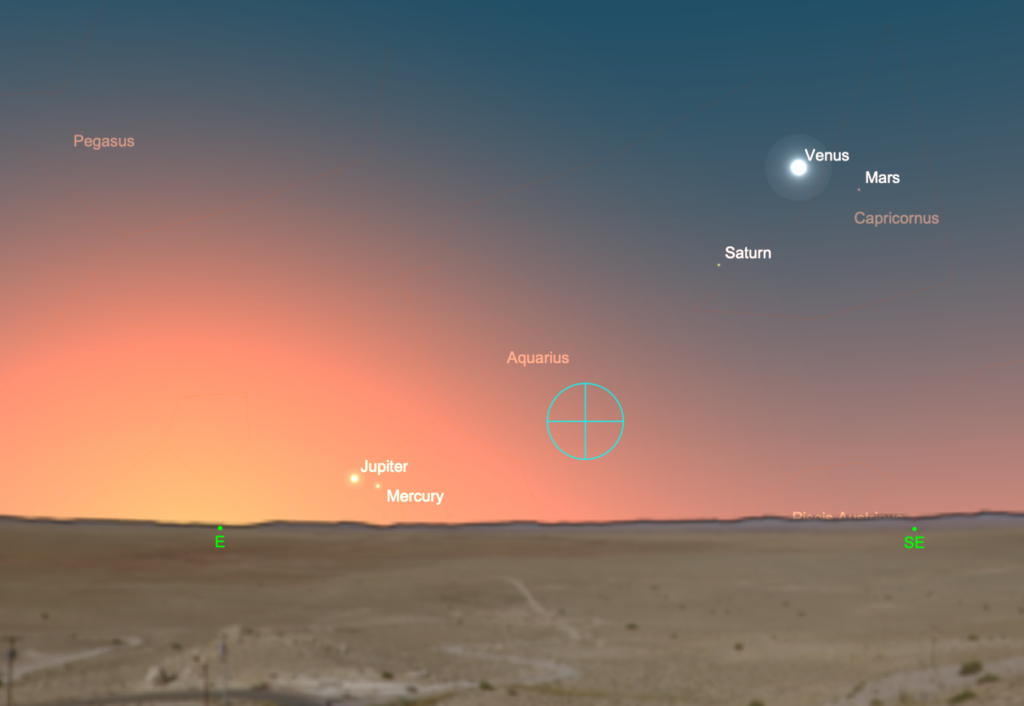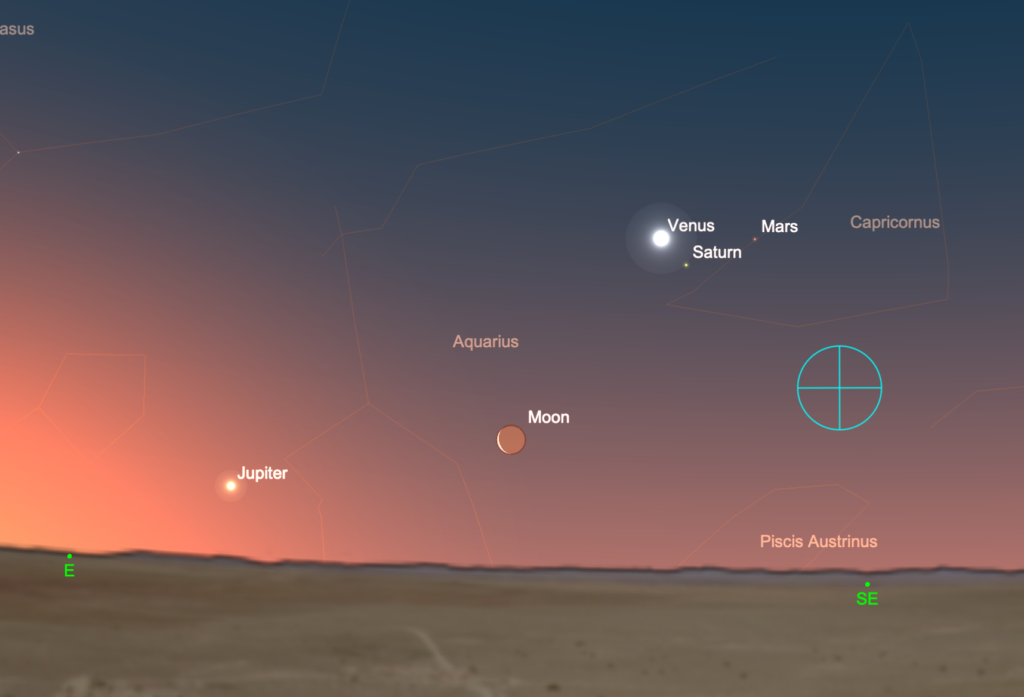
All five bright planets make an appearance in the eastern early-morning sky this month. Venus is by far the brightest of the lot, while Jupiter still lies low enough in the twilight to make it a challenge to see. The prominent constellations Orion, Taurus, and Canis Major all linger in the southwestern evening sky, and their proximity to the horizon makes for promising compositions for nightscapes. Deep-sky observers welcome the beginning of galaxy season as the Earth’s nightward side looks out of the plane of the Milky Way into the depths of intergalactic space. And the seasons change as spring begins in the northern hemisphere and autumn begins in the south. Here’s what to see in the night sky this month.
2 March 2022. New Moon, 17:35 UT

2 March. Look for four planets in the east-southeastern sky before sunrise. Saturn and Mercury lie less than a degree apart low over the horizon, while Mars and brilliant Venus are higher up and slightly west. A pair of binoculars improves the view. Southern hemisphere observers see Saturn and Mercury at a higher elevation; this is the best morning apparition of Mercury for southern observers in 2022.
7 March. Grab a pair of binoculars or a small telescope and look for Uranus less than a degree north of the waxing crescent Moon.
8 March. The crescent Moon lies between the Pleiades and Hyades star clusters in Taurus.
10 March. First Quarter Moon, 10:45 UT
12 March. Earth’s two nearest planetary neighbors pass within 4º of each other low over the southeastern horizon before sunrise. Venus shines at an impressive magnitude -4.5, about 200 times brighter than Mars. In a telescope, Venus spans about 27″ and shows a disk about 45% illuminated, while Mars spans a tiny 4.9 arc-seconds, too small to reveal any surface detail in a telescope.
13 March. Daylight Saving Time begins for much of North America, magically removing an hour from your day that you won’t get back until early November!
18 March. Full Moon, 07:18 UT
19 March. A thick gibbous Moon rises about 4º from Spica in Virgo.
20-31 March. As the Moon gets out of the way in the evening sky, northern observers far from city lights can spot the zodiacal light in the western sky after sunset. This whitish wedge-shaped glow emerges at a steep angle to the western horizon this time of year. It’s caused by sunlight reflected by fine dust grains along the plane of the solar system. The zodiacal light is brightest closer to the Sun, so look for the zodiacal light about half hour after the end of evening twilight.
20 March. The Sun passes the celestial equator moving north at 15:33UT. This marks the equinox and the first day of spring in the northern hemisphere and autumn in the southern hemisphere.

20 March. Look for Jupiter a little over a degree north of Mercury in the eastern sky before dawn. Northern observers will find this observation challenging because of the shallow angle of the ecliptic with the horizon. Southern-hemisphere observers will see the pair at a better elevation. With the arrival of Jupiter in the morning sky, all five bright planets are now visible before sunrise.
20 March. Venus lies at greatest western elongation about 47o from the Sun in the morning sky. In a telescope today, the planet appears 50% illuminated.
25 March. Last Quarter Moon, 05:37 UT

28 March. Venus continues to outshine its fellow bright planets in the early-morning sky. At magnitude -4.3, it now shows a disk about 54% illuminated. Saturn is still small, about 15.7” across, and shines at magnitude +0.9. Mars lies about seven degrees to the west of the pair. A very slender crescent Moon lies below the two planets.